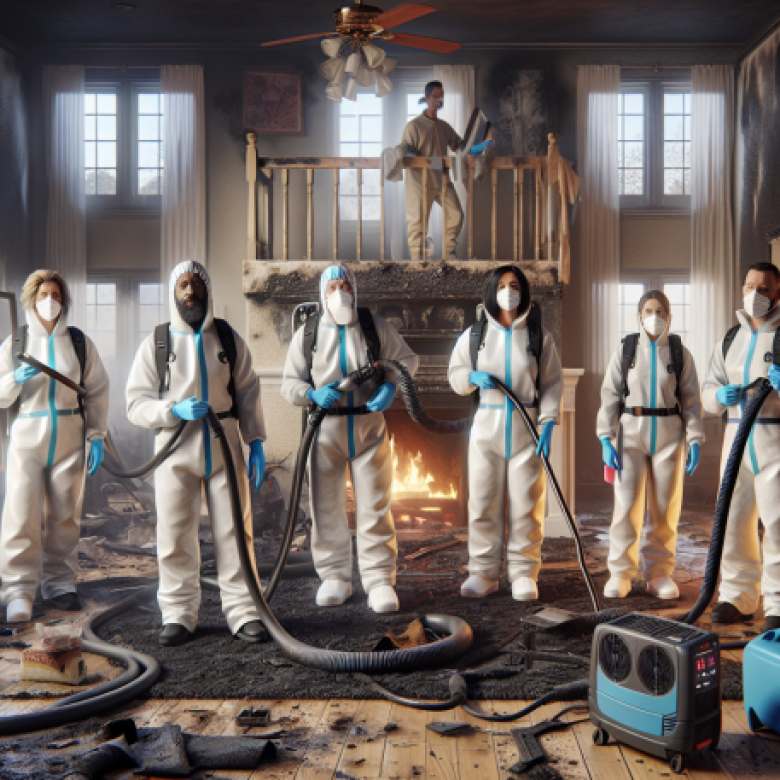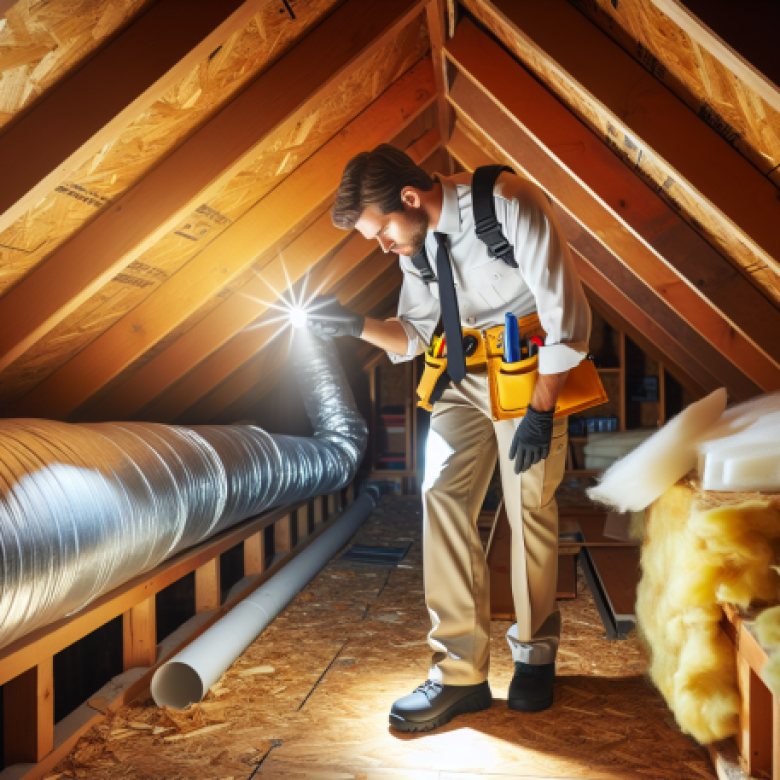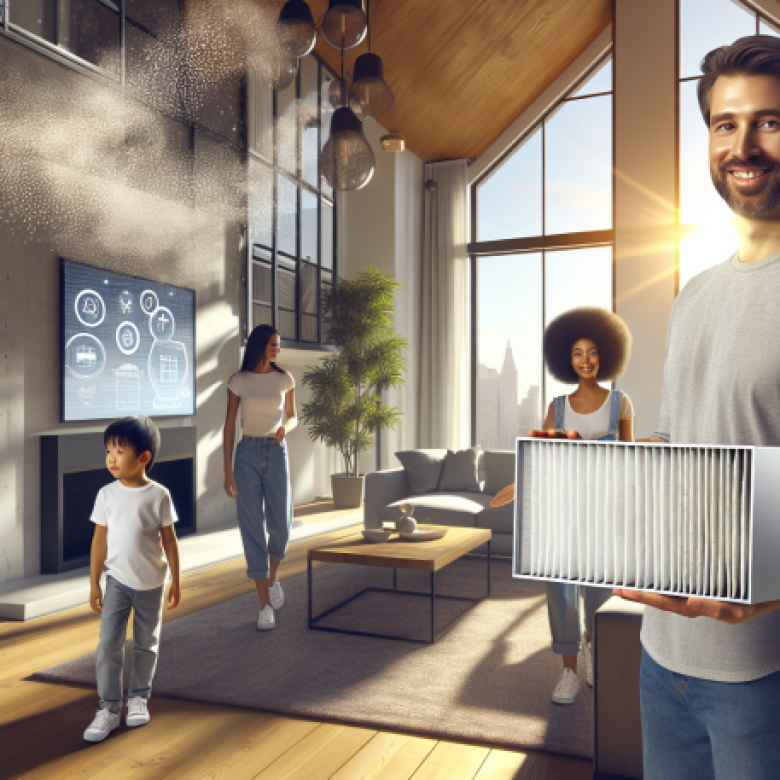Indoor air quality is a crucial aspect of maintaining a healthy living environment, especially in both commercial and residential properties. At Projekt Property Restoration, we understand the importance of proper ventilation to ensure optimal indoor air quality. With over 16 years of experience in property restoration, our fully licensed and insured company specializes in addressing issues caused by water, fire, mold, and biohazard incidents. Located at 20533 Biscayne Blvd Suite #1231, Aventura, FL 33180, we are dedicated to providing top-notch service to our clients. You can reach us at 1-855-933-7935 or via email at Claims@ProjektFL.com.
Our team of experts is equipped with state-of-the-art equipment to effectively restore your property and improve indoor air quality. We offer a wide range of services, including water damage restoration, mold assessment and remediation, fire damage restoration, biohazard cleanup, and more. Proper ventilation is key to preventing mold growth and ensuring a healthy indoor environment. Our mission is to restore your property to its pre-loss condition while maintaining affordable pricing and high-quality service.
At Projekt Property Restoration, we are committed to providing prompt and professional service, available 24/7 to address your urgent needs. Our highly trained team works diligently to ensure every step of the restoration process is handled with care and expertise. We also assist with direct insurance billing, making the restoration process as seamless as possible for you.
For more information on how to improve indoor air quality through effective ventilation, stay connected with us on Facebook, Instagram, Twitter, and Google. Visit our blog for informative articles related to property restoration and indoor air quality tips. Contact us today at 1-855-933-7935 for 24/7 emergency services and let us help you restore your property and peace of mind.
Importance of Proper Ventilation in Maintaining Indoor Air Quality
Proper ventilation is a critical component in maintaining indoor air quality. It involves the process of exchanging indoor air with outdoor air to dilute and remove indoor pollutants, moisture, and odors. The importance of proper ventilation cannot be overstated, as it directly impacts the health, comfort, and well-being of occupants. This article delves into the significance of proper ventilation in maintaining indoor air quality, supported by statistics, expert opinions, and practical examples.
Health Benefits of Proper Ventilation
Proper ventilation is essential for maintaining a healthy indoor environment. According to the Environmental Protection Agency (EPA), indoor air can be two to five times more polluted than outdoor air. This is alarming, considering that people spend approximately 90% of their time indoors. Poor indoor air quality can lead to a range of health issues, including respiratory problems, allergies, and even chronic diseases.
"Good ventilation is crucial for reducing indoor air pollutants and preventing health issues such as asthma, allergies, and respiratory infections." – American Lung Association
Reducing Indoor Pollutants
Indoor pollutants come from various sources, including building materials, household products, and activities such as cooking and smoking. Proper ventilation helps to reduce the concentration of these pollutants, thereby improving indoor air quality. Common indoor pollutants include:
- Volatile Organic Compounds (VOCs): Emitted from paints, cleaning products, and building materials.
- Carbon Monoxide (CO): Produced by combustion appliances like stoves and heaters.
- Radon: A naturally occurring radioactive gas that can seep into buildings from the ground.
- Particulate Matter: Tiny particles from dust, smoke, and other sources.
Moisture Control
Excess moisture in indoor environments can lead to mold growth, which poses significant health risks. Mold can cause allergic reactions, asthma attacks, and other respiratory issues. Proper ventilation helps to control moisture levels, preventing mold growth and maintaining a healthy indoor environment.
"Effective ventilation is key to controlling moisture and preventing mold growth, which can have serious health implications." – Centers for Disease Control and Prevention (CDC)
Enhancing Comfort and Well-being
Proper ventilation not only improves health but also enhances overall comfort and well-being. Stale air, odors, and high humidity levels can make indoor environments uncomfortable. By ensuring adequate ventilation, you can create a more pleasant and comfortable living or working space.
Energy Efficiency
While proper ventilation is essential for maintaining indoor air quality, it should be balanced with energy efficiency. Modern ventilation systems, such as energy recovery ventilators (ERVs) and heat recovery ventilators (HRVs), are designed to provide fresh air while minimizing energy loss. These systems are particularly beneficial in tightly sealed, energy-efficient buildings.
Practical Tips for Proper Ventilation
To ensure proper ventilation and maintain indoor air quality, consider the following tips:
- **Use Exhaust Fans:** Install exhaust fans in kitchens and bathrooms to remove moisture and odors.
- **Open Windows:** Regularly open windows to allow fresh air to circulate, especially during activities that generate pollutants, such as cooking and cleaning.
- **Maintain HVAC Systems:** Regularly inspect and maintain heating, ventilation, and air conditioning (HVAC) systems to ensure they are functioning properly.
- **Use Air Purifiers:** Consider using air purifiers with HEPA filters to remove airborne particles and improve indoor air quality.
- **Monitor Indoor Air Quality:** Use indoor air quality monitors to keep track of pollutant levels and take necessary actions to improve ventilation.
Case Studies and Examples
Several case studies highlight the importance of proper ventilation in maintaining indoor air quality. For instance, a study conducted by the Harvard T.H. Chan School of Public Health found that improved ventilation in office buildings led to better cognitive function and productivity among employees.
Another example is the use of mechanical ventilation systems in schools. Research by the Lawrence Berkeley National Laboratory showed that schools with adequate ventilation had lower absenteeism rates and better academic performance among students.
Conclusion
Proper ventilation is crucial for maintaining indoor air quality, reducing pollutants, controlling moisture, and enhancing comfort and well-being. By implementing effective ventilation strategies, you can create a healthier and more comfortable indoor environment. For more information on maintaining indoor air quality and related services, visit Projekt Restoration.
For specific services related to mold removal, you can explore our Cooper City Mold Removal and Davie Mold Removal pages. If you need assistance with water damage, check out our Weston Water Damage services.
References
- Environmental Protection Agency (EPA). “Indoor Air Quality.” [Link](https://www.epa.gov/indoor-air-quality-iaq)
- American Lung Association. “Indoor Air Quality.” [Link](https://www.lung.org/clean-air/at-home/indoor-air-pollutants)
- Centers for Disease Control and Prevention (CDC). “Mold.” [Link](https://www.cdc.gov/mold/default.htm)
- Harvard T.H. Chan School of Public Health. “The Impact of Green Buildings on Cognitive Function.” [Link](https://www.hsph.harvard.edu/news/press-releases/green-office-environments-linked-with-higher-cognitive-function-scores/)
- Lawrence Berkeley National Laboratory. “Ventilation and Health in Schools.” [Link](https://iaqscience.lbl.gov/schools-summary)
Effective Ventilation Techniques for Different Types of Indoor Spaces
Indoor air quality is a critical aspect of maintaining a healthy and comfortable living environment. Proper ventilation plays a significant role in ensuring that indoor spaces remain free from pollutants, allergens, and excess moisture. Different types of indoor spaces require tailored ventilation techniques to address their unique needs effectively. This guide explores various ventilation strategies for residential, commercial, and industrial spaces, providing practical tips to enhance indoor air quality.
Residential Spaces
Natural Ventilation
Natural ventilation is one of the most cost-effective and eco-friendly methods to improve indoor air quality in residential spaces. It involves using windows, doors, and vents to allow fresh air to circulate through the home. Here are some tips for optimizing natural ventilation:
- Cross Ventilation: Open windows and doors on opposite sides of a room to create a cross breeze that helps to expel stale air and bring in fresh air.
- Window Placement: Strategically place windows to maximize airflow. High and low windows can help create a natural convection current, drawing cool air in from lower windows and expelling warm air through higher windows.
- Ventilation Grilles: Install ventilation grilles in walls or doors to facilitate air movement between rooms.
Mechanical Ventilation
In situations where natural ventilation is insufficient, mechanical ventilation systems can be employed. These systems use fans and ducts to circulate air throughout the home. Common types of mechanical ventilation include:
- Exhaust Fans: Install exhaust fans in kitchens and bathrooms to remove moisture, odors, and pollutants. Ensure that these fans vent to the outside rather than into the attic or other indoor spaces.
- Whole-House Ventilation Systems: Consider installing a whole-house ventilation system, such as an energy recovery ventilator (ERV) or heat recovery ventilator (HRV). These systems exchange stale indoor air with fresh outdoor air while minimizing energy loss.
Commercial Spaces
HVAC Systems
Heating, ventilation, and air conditioning (HVAC) systems are essential for maintaining indoor air quality in commercial spaces. Proper maintenance and operation of HVAC systems can significantly improve air quality. Key considerations include:
- Regular Maintenance: Schedule regular maintenance for HVAC systems to ensure they operate efficiently. This includes cleaning or replacing filters, inspecting ducts, and checking for leaks.
- Air Filtration: Use high-efficiency particulate air (HEPA) filters to capture airborne particles, such as dust, pollen, and bacteria. Ensure that filters are replaced regularly to maintain their effectiveness.
- Zoning Systems: Implement zoning systems to control airflow to different areas of the building. This allows for better temperature and air quality management in various zones.
Ventilation Rate
Determining the appropriate ventilation rate is crucial for commercial spaces. The ventilation rate depends on the type of activities conducted in the space and the number of occupants. The American Society of Heating, Refrigerating, and Air-Conditioning Engineers (ASHRAE) provides guidelines for ventilation rates in different commercial settings. Key tips include:
- Calculate Occupant Load: Determine the number of occupants in each area to calculate the required ventilation rate. Use ASHRAE guidelines to ensure compliance.
- Adjust for Activities: Consider the type of activities conducted in the space. For example, a gym or restaurant may require higher ventilation rates due to increased activity levels and potential pollutants.
Industrial Spaces
Local Exhaust Ventilation
Industrial spaces often generate significant amounts of pollutants, such as dust, fumes, and chemicals. Local exhaust ventilation (LEV) systems are designed to capture and remove these pollutants at their source. Key components of LEV systems include:
- Hoods: Position hoods close to the source of pollutants to capture them effectively. Ensure that hoods are properly sized and designed for the specific application.
- Ductwork: Use appropriate ductwork to transport captured pollutants to a filtration or exhaust system. Regularly inspect and clean ducts to prevent blockages and maintain efficiency.
- Filtration Systems: Install filtration systems, such as bag filters or electrostatic precipitators, to remove pollutants from the air before it is exhausted outside.
General Ventilation
In addition to LEV systems, general ventilation is necessary to maintain overall air quality in industrial spaces. This can be achieved through:
- Dilution Ventilation: Use fans and vents to dilute and disperse pollutants throughout the space, reducing their concentration. Ensure that the ventilation rate is sufficient to maintain safe air quality levels.
- Make-Up Air Systems: Install make-up air systems to replace exhausted air with fresh outdoor air. This helps to maintain balanced air pressure and prevent the infiltration of contaminants from other areas.
Specialized Spaces
Healthcare Facilities
Healthcare facilities require stringent air quality standards to prevent the spread of infections and ensure patient safety. Effective ventilation strategies for healthcare settings include:
- Isolation Rooms: Use negative pressure ventilation in isolation rooms to prevent the spread of airborne pathogens. Ensure that air from these rooms is exhausted directly outside and not recirculated.
- Operating Rooms: Implement positive pressure ventilation in operating rooms to keep contaminants out. Use HEPA filters to maintain a sterile environment.
- Air Changes per Hour (ACH): Follow guidelines for air changes per hour to ensure adequate ventilation. For example, operating rooms typically require 15-20 ACH.
Laboratories
Laboratories often handle hazardous materials that require specialized ventilation systems. Key strategies include:
- Fume Hoods: Use fume hoods to capture and exhaust hazardous fumes and vapors. Ensure that hoods are properly maintained and tested regularly.
- Ventilation Controls: Implement ventilation controls, such as variable air volume (VAV) systems, to adjust airflow based on the level of activity and the presence of hazardous materials.
- Emergency Ventilation: Install emergency ventilation systems to quickly remove contaminants in the event of a spill or accident.
Conclusion
Effective ventilation is essential for maintaining indoor air quality across various types of indoor spaces. By understanding the unique requirements of residential, commercial, industrial, and specialized spaces, you can implement appropriate ventilation techniques to ensure a healthy and comfortable environment. Regular maintenance, proper system design, and adherence to guidelines are key to achieving optimal indoor air quality.
For more information on improving indoor air quality and addressing specific ventilation needs, consider consulting with experts in the field. You can reach out to professionals for consulting services or explore solutions for issues like mold removal and dehumidification. Ensuring proper ventilation not only enhances comfort but also promotes the health and well-being of occupants in any indoor space.
In conclusion, maintaining optimal indoor air quality is essential for ensuring a healthy and comfortable living environment. By implementing effective ventilation strategies, such as using exhaust fans, opening windows, and incorporating air purifiers, you can significantly reduce indoor pollutants and improve the overall air quality in your home. Regular maintenance of HVAC systems and mindful use of household products also play crucial roles in this endeavor. Prioritizing indoor air quality not only enhances your well-being but also contributes to a more sustainable and pleasant living space. Remember, a breath of fresh air starts with the steps you take indoors.





